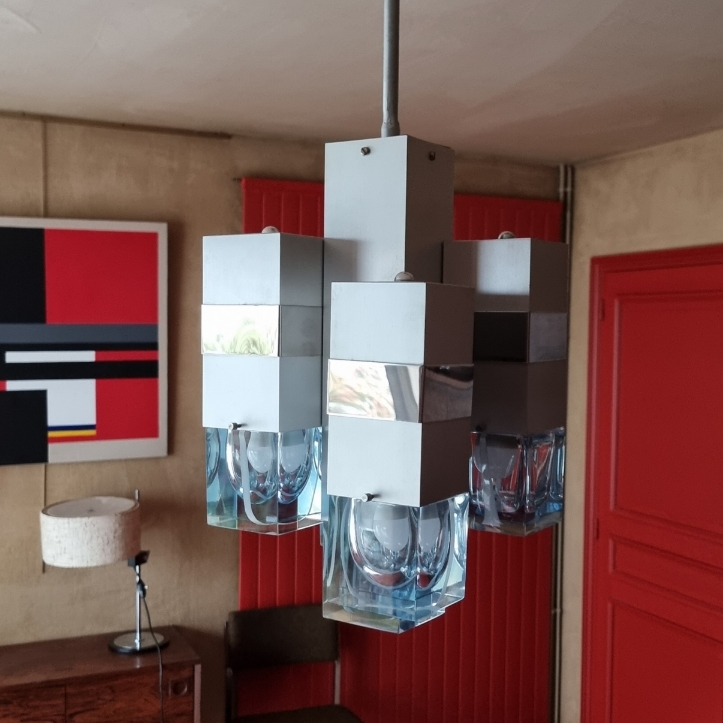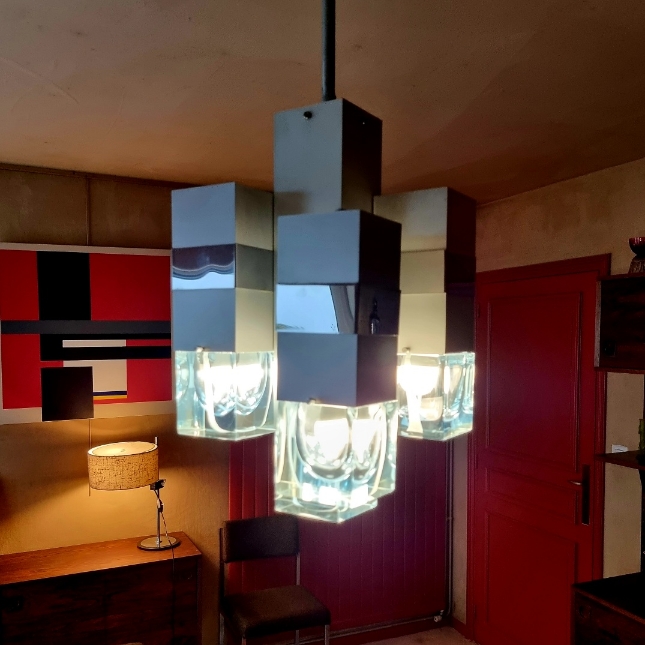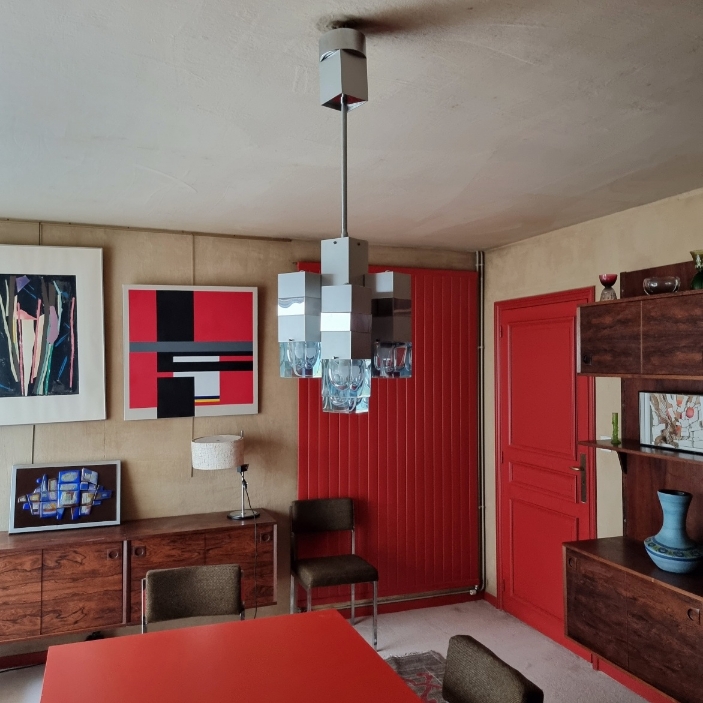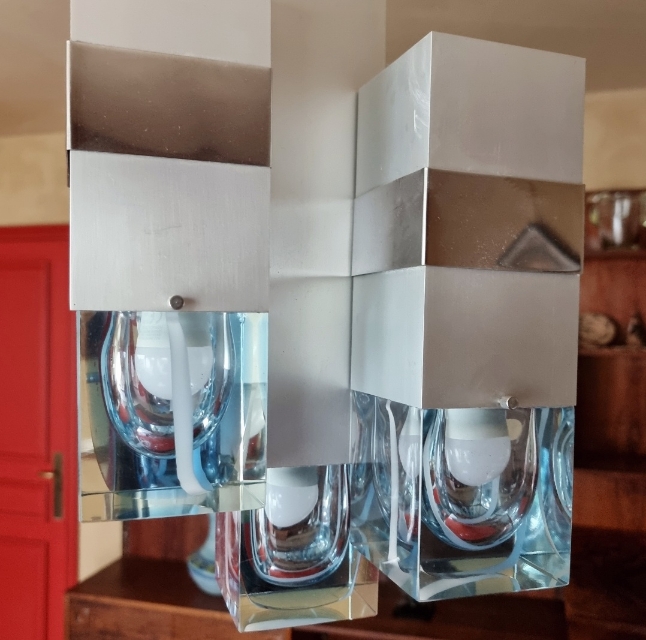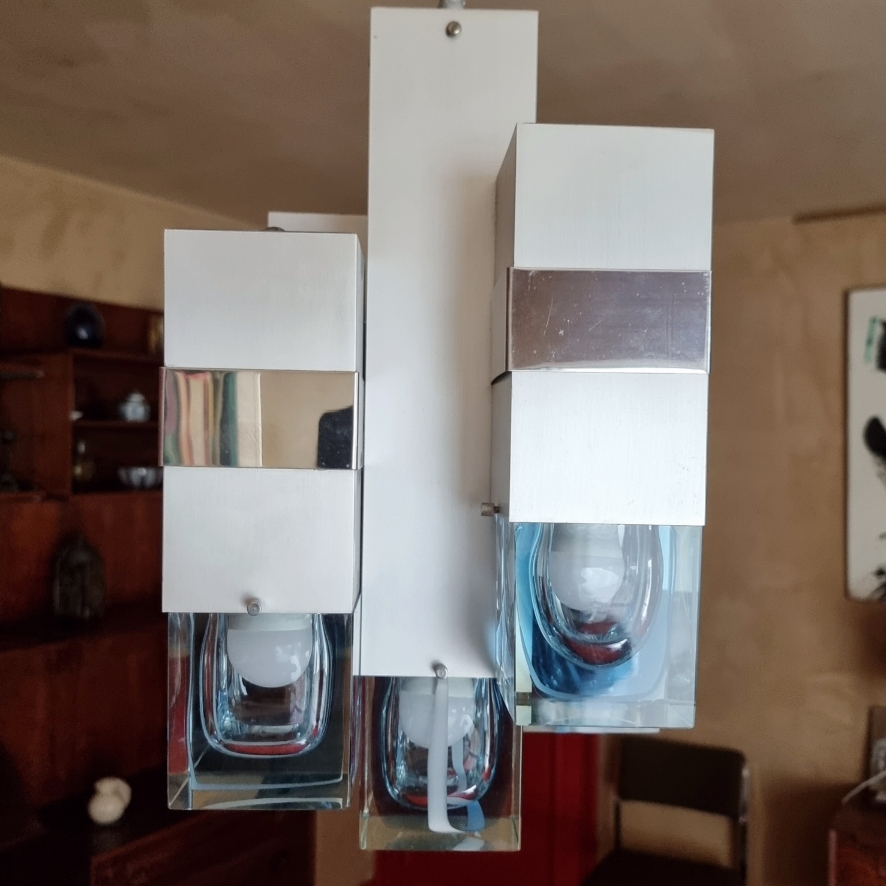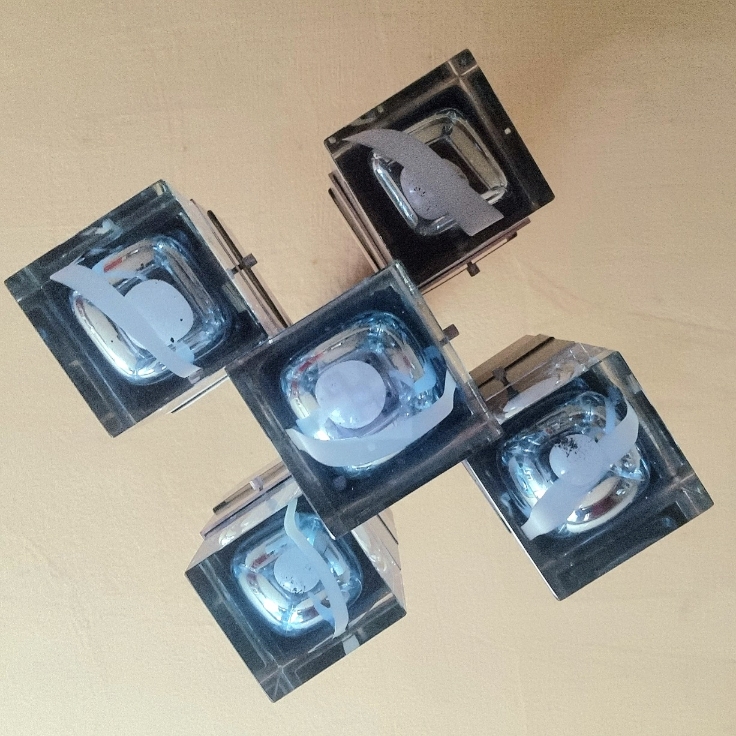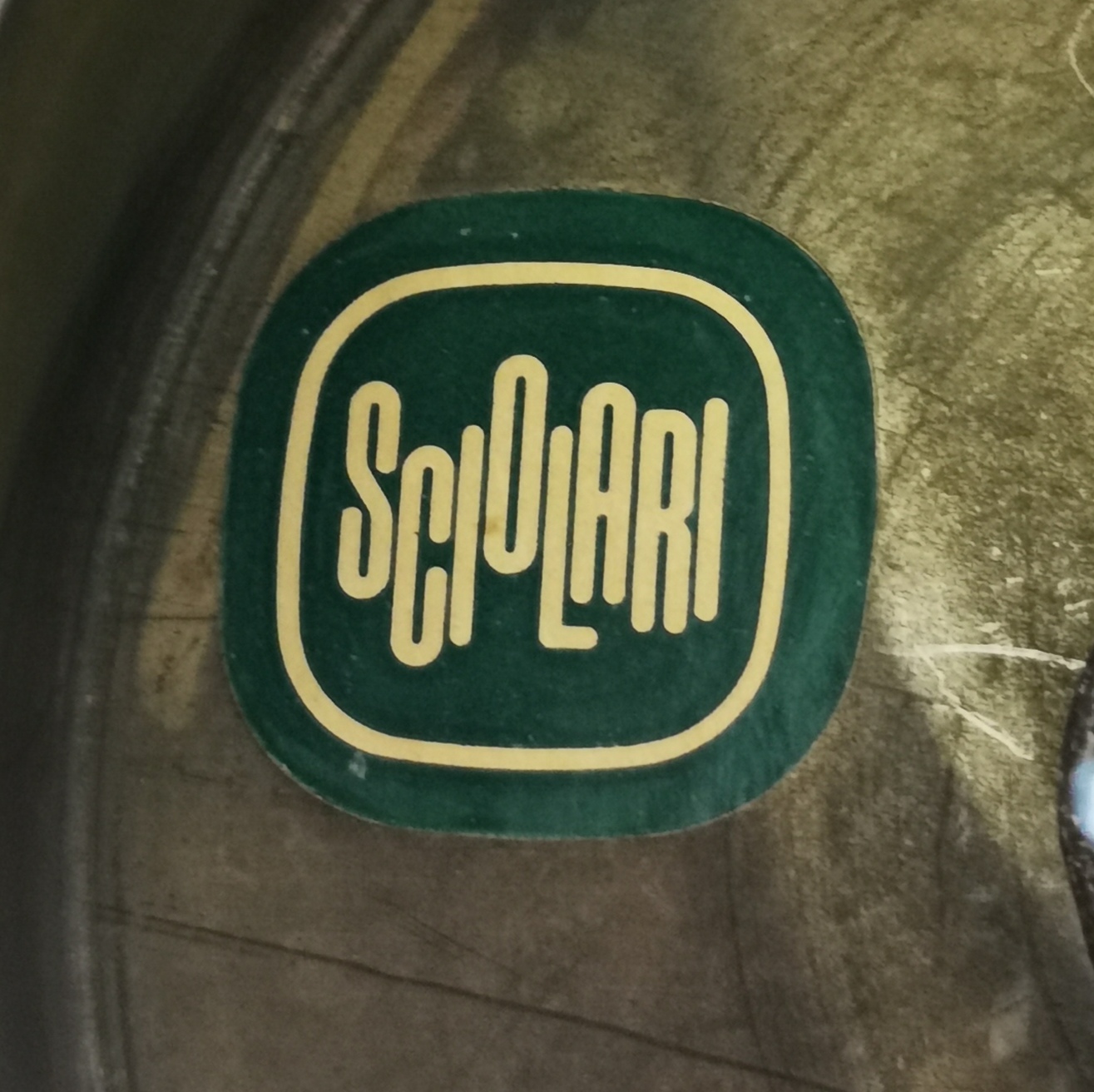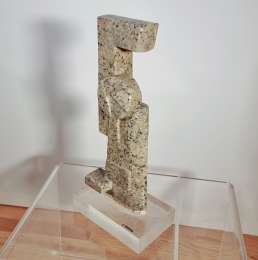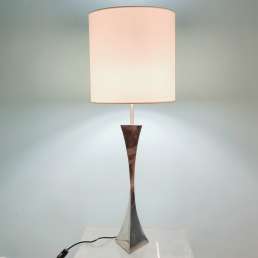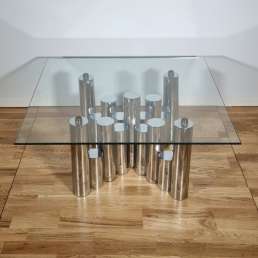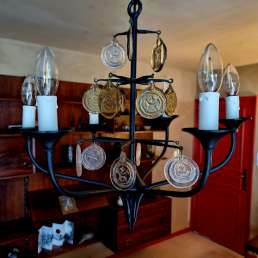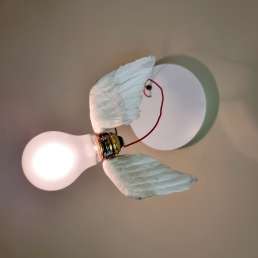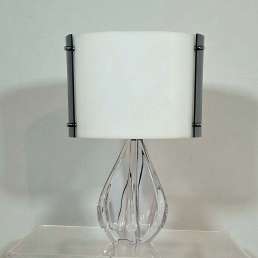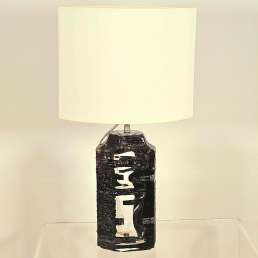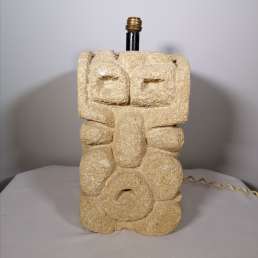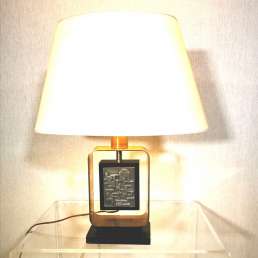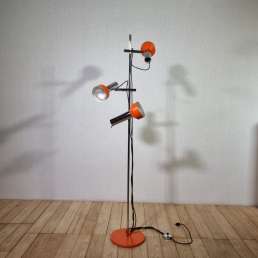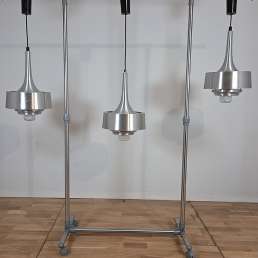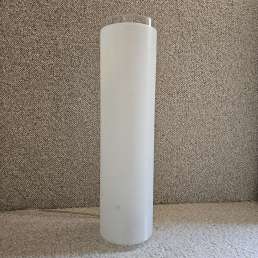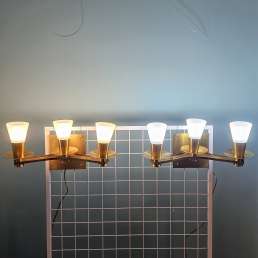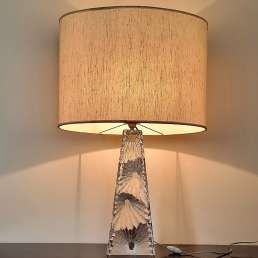“Cubico” chandelier, designed by G. Sciolari, circa 1970
Description
What I like
I like this Cubico chandelier because it incorporates all the codes of the modernist movement of the 70s: the sculptural aspect of the five square-section tubes, the matte and shiny metal work, finally the quality of the Murano glass verrines…With its metallic mount and the ice blue color of the cubic verrines, you would think you were in the intergalactic universe, in a science fiction film from the 1970s. We are in the middle of the Space Age! There is no doubt that it illuminates space travelers, “star chasers” sung by Sheila! Of course, you would have to dress at Courrèges or Paco Rabane for girls, Pierre Cardin for men, to fully reflect the spirit of this chandelier!
A symbol of geometric design from the 70s, very famous at the time of its creation, this chandelier is rare on the market: and you have a chance to welcome it into your home!
Technical description
Gaetano SCIOLARI for SCIOLARI
Chandelier in brushed metal model “Cubico” with 5 lights; it is made up of 5 square section tubes of different heights, each tube encircled by a chrome strip, ending in a slightly bluish Murano glass cube with a lattimo fillet. Suspension rod ending in bail cover in square section tube. The electrical installation completely redone by a professional.
Space Age style, circa 1970.
Three tiny chips on the corners of the glass cubes, the suspension rod restored and anodized.
Dimensions and weight
Height: 50 cm- Width: 23 cm- Depth: 23 cm
Weight: 7,5 kg
Mix & Match
This Cubico chandelier has a very strong personality, both in its shape and the combination of glass and chrome. It will easily illuminate a medium-sized room by giving it an offbeat, very modernist touch. The blue of its verrines will recall the blue of the wool cloth of the G10 armchairs by Pierre Guariche for Airborne, its chrome frame takes up the codes of the series of coffee tables in the style of Willy Rizzo (chrome and glass)! This Cubico can light up a corner to play or have a meal around Gae Aulenti’s Orsay set.
On the wall, bet on blue: Paul Shusaku Foujino’s cut-out gouache “Vers la joie”, or the geometric abstraction of Edgard Pillet’s “Composition”!
To stay in Italy, we will place in this room the sculptural lamp-cylinder in chromed metal and smoked plexiglass by Felice Antonio Botta and the marble statue by Jean Podevin, also with very studied volumes!
Description
To know more
The designer
Gaetano Sciolari was born in 1927. After graduating in architecture, he studied filmmaking. His father died unexpectedly in 1949 and he returned home to take over the reins of the family business, Sciolari Lighting, founded in 1892.
During the 1950s, Gaetano Sciolario became the main designer of the legendary lighting company Stilnovo, founded by Bruno Gatti in Milan in 1946. In the post-war period, many Italian companies, including Stilnovo in particular, were internationally acclaimed for their experimentation with new materials and aerodynamic silhouettes. However, Gaetano Sciolari sticks to more traditional designs and often uses opaline glass, Plexiglas and brass. Produced by Stilnovo, his Molecular Chandelier (1955) embodies his penchant for modernist geometry with decorative materials. In the mid to late 1960s, Sciolari’s designs for his own company met with success in the United States and Europe. His works are influenced by cubism as well as constructivism and minimalism. But they are characterized by their sophistication, their sculptural and futuristic appearance. He uses crystal and glazed glass in juxtaposition with polished metal, including an original combination of brass and chrome.
During the 1970s, Sciolari Lighting imported lamps into the United States through Lightolier & Progress Lighting, which featured numerous collections in annual catalogs including Geometric Series, Habitat Series, Scultura Series, and Futura Series. The success is there and the sales are numerous. The family business is strengthened.
Many argue that Sciolari produced his best work in the 1970s, when his tastes moved away from strict modernism in favor of a more artisanal and decorative aesthetic alongside art deco and Space Age style. The same pattern can be seen in the designs of Paul Evans, François Monnet and Verner Panton The Cubic Series, which was made in a variety of sizes, configurations and finishes, is Sciolari’s most famous design. He appeared on many television shows in the 1970s and 80s.
Sciolari was notably the founder and first president of the professional association of Italian manufacturers of lighting fixtures.
Sciolari died in 1994. Today his lamps are highly sought after by collectors
The editor
Sciolari was created in 1892. The success of this company is mainly linked to Gaetano Sciolari who took over the reins in 1949.
Dynamic and ambitious, he entered the company in an international competition dedicated to lighting design in 1954 and won the 1st prize! Sciolari was noticed by the distributor American Lightolier and then by Progress Lighting: the publisher quickly became the leading Italian seller of lighting in the United States, their creations appearing in the famous Dallas series.
A beautiful and authentic chandelier at a fair price
This chandelier has been carefully selected for its aesthetic qualities, its originality and its fair price. Our choice favors above all the acuity of the design, guarantee of a valorization of your new acquisition in your interior and of an ability to dialogue with your furniture, to agree and to mix to create a unique decoration.
In light of the enthusiasm for Space Age creations, this chandelier represents a lasting investment.
On the other hand, buying a vintage design piece means preserving the resources of our planet earth.


